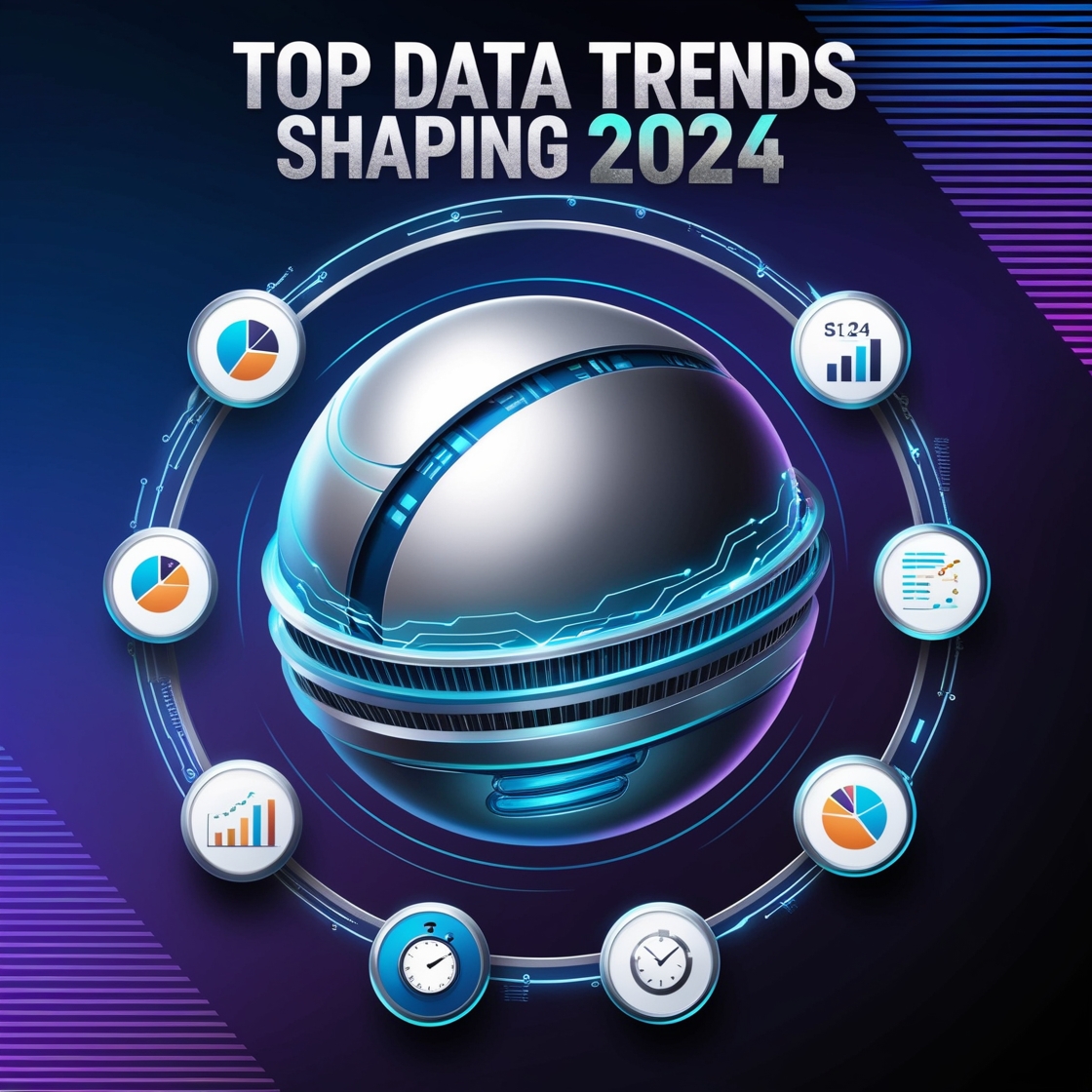Introduction
In 2024, the data landscape continues to evolve at a rapid pace. With new technologies emerging and existing ones maturing, understanding the top data trends is essential for businesses and individuals alike. But what are data trends, and why are they so important?
Data trends refer to the patterns and innovations driving how data is collected, processed, and analyzed. In today’s world, data is the lifeblood of nearly every industry, and staying up-to-date with these trends can be the difference between staying ahead of the curve or falling behind.
Artificial Intelligence (AI) and Machine Learning (ML) Evolution
AI for Enhanced Data Analytics
One of the most significant shifts we’re seeing in 2024 is the role of AI in enhancing data analytics. With AI-driven algorithms, businesses can now process and analyze data more efficiently than ever. These tools help organizations extract deeper insights, optimize operations, and predict future trends with remarkable accuracy.
Predictive Analytics Gaining Momentum
Predictive analytics, powered by machine learning models, allows companies to foresee trends and make informed decisions. In 2024, predictive analytics is expected to be a critical component of business strategies, especially in areas like marketing, finance, and supply chain management.
AI’s Role in Automation of Data Processing
AI isn’t just analyzing data—it’s also transforming the way data is processed. Automation tools driven by AI are streamlining everything from data collection to integration, reducing manual work, and improving accuracy.
The Rise of Edge Computing
What is Edge Computing?
Edge computing is a game-changer in 2024. It refers to processing data closer to where it’s generated, rather than sending it to a central server. This reduces latency and allows for real-time data processing.
Benefits of Edge Computing in Data Processing
By bringing data processing closer to the source, edge computing enables faster and more efficient operations. It’s particularly beneficial in industries like healthcare and IoT (Internet of Things), where real-time insights can have a massive impact.
Impact on Real-Time Analytics
The ability to process data at the edge opens the door for real-time analytics, which is becoming increasingly important for businesses that need immediate insights to stay competitive.
Data Democratization and Self-Service Analytics
Empowering Non-Technical Users with Data Tools
Data democratization is all about making data accessible to everyone, not just data scientists. In 2024, we see a rise in self-service analytics tools, allowing non-technical users to leverage data insights without needing advanced coding skills.
Growth of No-Code/Low-Code Platforms
No-code and low-code platforms are simplifying the process of building data solutions, making it easier for businesses to customize their data analytics without needing a team of developers.
Self-Service Analytics for Better Decision-Making
Self-service analytics tools empower employees at all levels to make data-driven decisions, improving overall business efficiency and agility.
Data Security and Privacy Concerns
Increasing Threats and Data Breaches
With the rise in data collection, there’s also an increase in threats to data security. Cyberattacks and data breaches are on the rise, making it more crucial than ever for companies to safeguard their data.
Evolution of Privacy Laws (GDPR, CCPA, etc.)
In response to growing privacy concerns, governments worldwide are tightening regulations, such as GDPR and CCPA. Businesses must stay compliant, or they risk severe penalties.
The Role of AI in Enhancing Data Security
AI is playing an increasingly vital role in identifying potential security threats and mitigating risks, making it a key player in the fight against cybercrime in 2024.
Data Governance and Ethics
Ensuring Data Accuracy and Integrity
Data governance is critical in ensuring that data remains accurate, consistent, and secure. In 2024, organizations are placing a stronger emphasis on data governance frameworks to ensure data integrity.
Ethical Use of Data in 2024
As data collection grows, so do concerns about how it’s used. Businesses are under pressure to ensure ethical practices when using consumer data, fostering trust and transparency.
Strategies for Transparent Data Governance
Developing clear, transparent data governance policies helps businesses avoid legal issues and gain consumer trust.
The Expansion of Data Lakes and Data Warehousing
Data Lakes vs. Data Warehouses: What’s the Difference?
Data lakes store vast amounts of raw data, while data warehouses are optimized for structured data. In 2024, we’re seeing more businesses adopting hybrid approaches to balance these two methods.
The Hybrid Approach for Managing Data
Hybrid data management systems allow companies to leverage both the flexibility of data lakes and the structure of data warehouses, providing a more comprehensive data strategy.
The Role of Cloud Storage Solutions
Cloud storage is making it easier to manage large volumes of data, offering scalability, flexibility, and security to businesses of all sizes.
Real-Time Data and Streaming Analytics
The Need for Instantaneous Data Insights
Real-time data has become a non-negotiable aspect of business in 2024. The faster you can gather and analyze data, the quicker you can make decisions that impact your bottom line.
How Streaming Analytics is Shaping Industries
Streaming analytics allows businesses to analyze data as it comes in, rather than waiting for batch processing. This trend is revolutionizing industries like finance, retail, and telecommunications.
The Future of Real-Time Data Processing
The demand for real-time data processing will only grow in 2024, with innovations like 5G and edge computing leading the way.
The Importance of Data Visualization
Data Storytelling Through Visualization
Data visualization tools are crucial for translating complex datasets into understandable insights. Businesses are increasingly focusing on telling stories through data to communicate insights more effectively.
AI-Powered Visualization Tools
AI is enhancing visualization tools, making them smarter and more intuitive. These tools can automatically generate charts, graphs, and insights based on the data, saving users time and effort.
Making Complex Data Simple and Accessible
Simplifying complex data through visualization is key to making data more accessible across organizations, fostering a culture of data-driven decision-making.
Blockchain Technology in Data Management
Securing Data with Blockchain
Blockchain technology offers a secure and transparent way to manage data. It ensures that once data is recorded, it cannot be altered without leaving a trace, making it
